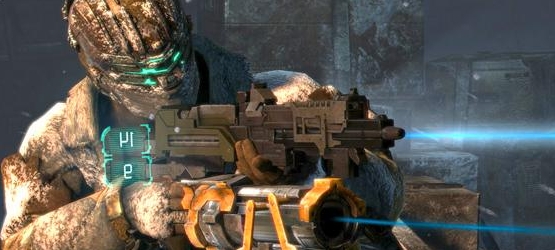PSLS’ Vivas looks at games marketing, and how it can misrepresent a game to consumers all in service to the Rule of Cool.
I’m not a business man, but I imagine game marketing to be a really tough thing to do well. First you have to find out what a game’s identity is within a given market and then also determine who’s buying it. But in order to increase sales you have to find a way to market a game to a wider audience, and so you have to find aspects within it that will appeal to other demographics. All the while, you have to constantly be pitching all of its strengths and spinning all of its weaknesses so that you can create effective advertising for it. It’s a tough balancing act that requires an acute awareness of a game, its past (if it’s a franchise), and an awareness of the popular trends in gaming at the time that it’s being marketed. Unfortunately, this practice has a terrible tendency to lead to moments where a game is misrepresented as something that it’s not.
I decided to write an editorial regarding this phenomena as I was making my way through Hitman: Absolution for review. As I was methodically figuring out ways to murder my targets, I was given some time to reflect on the advertising for Absolution prior to its release. Some of you probably remember the controversial “Attack of the Saints” trailer that was released by Square Enix just prior to E3. The trailer was lambasted by the press for its attitude towards women and its misogynistic, sexist overtones. However, those themes are outside the scope of this particular editorial piece especially since the negative reaction to the trailer lead to IO Interactive changing that specific level of Hitman: Absolution. From a purely marketing standpoint, the trailer paints Absolution as though it were an action game with equal parts Bourne Identity and Arkham City.

Any fan of the Hitman franchise would immediately be able to tell you that Hitman is not an action game series. In fact, in past games anytime that a gunfight erupted or guards were alerted it was the game’s not-so-subtle way of letting you know that you had done something wrong and probably should restart the checkpoint. As a result, Hitman could be called a brutal, third-person puzzle game. However, puzzle elements don’t make for compelling stage demos or trailers (unless your game is named Portal and you are Valve). The emphasis on action, and elements within a game that are like another successful product creates a perception of ubiquity that makes new products feel generic even before they are released. It also has the unintended consequence of pissing off long time fans of a franchise which could jeopardize sales for a game.
In the case of Hitman, as mentioned in my review, the marketing did the game an incredible disservice. Of course, we’re now able to say this because the game is out and we have the benefit of hindsight. But what about a game that currently is in development awaiting release? Let’s take Dead Space 3 as an example. Again we have marketing that has been primarily action focused and game play demos that have focused on cooperative gameplay elements. Both of these ideas run antithetical to the what made Dead Space special as a franchise and are counter to what the hardcore fanbase cares about. Looking at our preview for the game from E3, I’m still hopeful that the game will maintain the core design elements that were both iconic and innovative from the previous installments, but it doesn’t help the game’s marketing when people on the production team are throwing around made-up buzzwords like ‘Quad-A‘.

At this point several readers have probably already mentally said, “Dude…marketing is all about making something look cool.” Which brings us to the Rule of Cool. The Rule of Cool (as defined by TV Tropes) is as follows:
The limit of the Willing Suspension of Disbelief for a given element is directly proportional to the element’s awesomeness.
Stated another way, all but the most pedantic of viewers will forgive liberties with reality as long as the result is wicked sweet or awesome. This applies to the audience in general; there will naturally be a different threshold for each individual.
The last sentence is particularly intriguing as it directly relates to who a game is marketed toward. It’s no secret that most games are marketed toward an adolescent audience even though the demographic is usually listed as 18-35. I would like to think that many of the preferences I had when I was 18 are still the ones I have now, but I know that that’s not the case at all. What I defined as ‘cool’ at the age of 18 isn’t ‘cool’ anymore (unless GTA 3 is still hugely popular…). So while I like video games it’s often tough to deal with the marketing that oozes forth from every pore of the business side. I would ignore it completely, and listen to the critical responses and view gameplay videos of the titles I’m interested in post-release. Unfortunately keeping abreast of the news, which often involves reading eye-gouging PR statements and action focused trailers, is a necessary adjunct to my job. My guess is that this is going to continue to be one of those things that bugs me, and that it will only get worse as time goes on and people become more desensitized. Oh well, I guess it’s as good a time as any to introduce an image I’ll probably use over and over as the ridiculousness continues.






